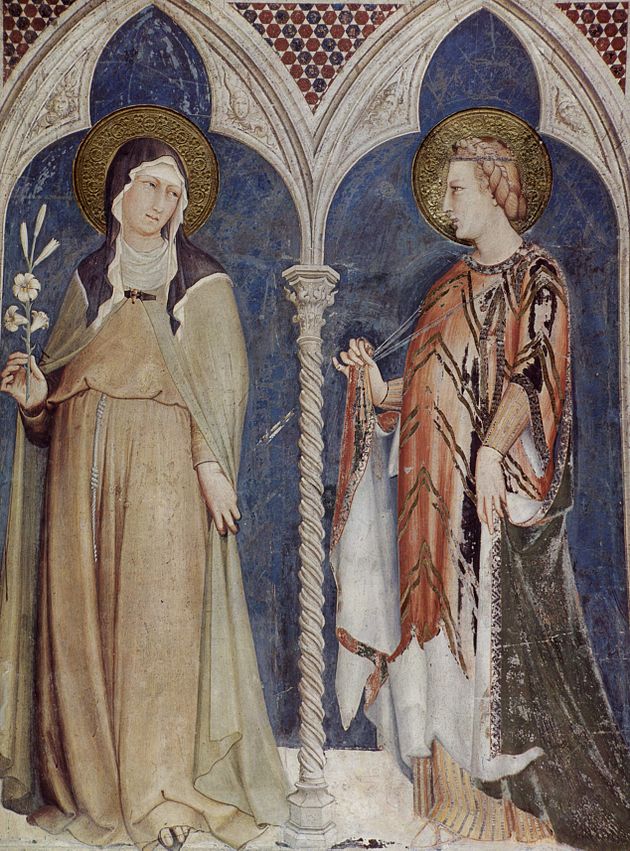Rule of St. Clare
| Saint Clare of Assisi | |
|---|---|
|
Detail depicting Saint Clare from a fresco (1312–20) by Simone Martini in the Lower basilica of San Francesco, Assisi
|
|
| Virgin | |
| Born |
July 16, 1194 Assisi |
| Died | August 11, 1253 (aged 59) Assisi |
| Venerated in | Roman Catholic Church, Anglican Communion, Lutheran Church |
| Canonized | September 26, 1255, Rome by Pope Alexander IV |
| Major shrine | Basilica of Saint Clare, Assisi |
| Feast | August 11 (1970 to date), August 12 (1255–1969) |
| Attributes | Monstrance, pyx, lamp, habit of the Poor Clares |
| Patronage | Eye disease, goldsmiths, laundry, television, embroiderers, gilders, good weather, needleworkers, Santa Clara Pueblo, Obando |
Saint Clare of Assisi (July 16, 1194 – August 11, 1253, born Chiara Offreduccio and sometimes spelled Clair, Claire, etc.) is an Italian saint and one of the first followers of Saint Francis of Assisi. She founded the Order of Poor Ladies, a monastic religious order for women in the Franciscan tradition, and wrote their Rule of Life, the first set of monastic guidelines known to have been written by a woman. Following her death, the order she founded was renamed in her honor as the Order of Saint Clare, commonly referred to today as the Poor Clares.
St. Clare was born in Assisi, the eldest daughter of Favorino Sciffi, Count of Sasso-Rosso and his wife Ortolana. Traditional accounts say that Clare's father was a wealthy representative of an ancient Roman family, who owned a large palace in Assisi and a castle on the slope of Mount Subasio. Ortolana belonged to the noble family of Fiumi, and was a very devout woman who had undertaken pilgrimages to Rome, Santiago de Compostela and the Holy Land. Later in life, Ortolana entered Clare's monastery, as did Clare's sisters, Beatrix and Catarina (who took the name Agnes).
As a child, Clare was devoted to prayer. Although there is no mention of this in any historical record, it is assumed that Clare was to be married in line with the family tradition. However, at the age of 18 she heard Francis preach during a Lenten service in the church of San Giorgio at Assisi and asked him to help her to live after the manner of the Gospel. On the evening of Palm Sunday, March 20, 1212, she left her father's house and accompanied by her aunt Bianca and another companion proceeded to the chapel of the Porziuncula to meet Francis. There, her hair was cut, and she exchanged her rich gown for a plain robe and veil.
...
Wikipedia

